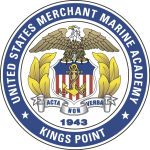News
Is our military sealift ready?
Military and civilian officials overseeing the nation’s sealift recently met to discuss ways to ensure the U.S. maritime industry is ready to play its crucial role in case war breaks out. This article summarizes their discussion and highlights the vital importance of the maritime sector to our national security.
Americans not familiar with wartime logistics usually assume the Navy is responsible for moving troops, supplies, armaments, fuel, and everything else needed to fight a protracted conflict. But that is the job of the U.S. Merchant Marine fleet and the military service-committed Merchant Marine officers who will command and crew these vessels (mostly commercial) that will be deployed to make up the backbone of our wartime logistical fleet. Wars are won (and lost) on how effectively a country can maintain a pipeline to its military forces. Even in the 21st century, this is a maritime gambit. As U.S. Army Lt. Gen. John Sullivan, Deputy Commander of U.S. Transportation Command (USTRANSCOM) noted during this meeting: “ … nearly 90% of U.S. military equipment would move by ship.”
The mariners the nation will call on are formally known as U.S. Navy Strategic Sealift Officers, and more than 80% of them are graduates of the U.S. Merchant Marine Academy (USMMA), one of the five federal service academies. USMMA graduates some of the nation’s finest young women and men fully credentialed Merchant Marine officers, all of whom have committed to serve their country for eight years.
